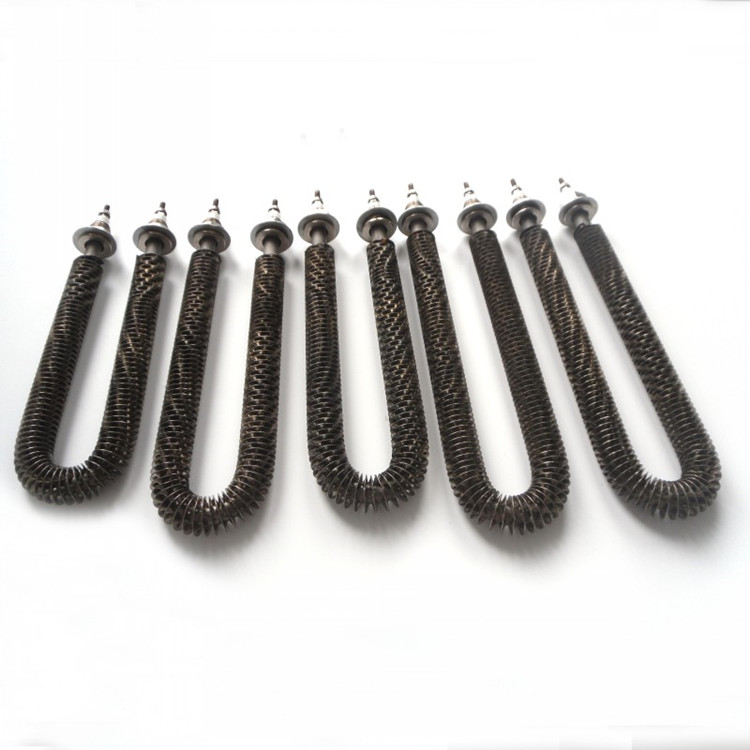The heating medium is different, and the heating tube selected is also different. Different working environments, heating tube materials are also different. Heating tube can be divided into air dry heating and liquid heating, in the use of industrial equipment, dry heating tube is mostly divided into stainless steel heating tube, finned heater. Their common characteristic is the use of stainless steel, the use of electric heating wire heat, the heat transfer to the air, so that the temperature of the heated medium rises. Although the heating tube allows dry burning, there is still a difference between the dry burning heating tube and the liquid heating tube.
Liquid heating tube: We need to know the liquid level height and whether the liquid is corrosive. The liquid heating tube must be completely immersed in the liquid during use to avoid the phenomenon of dry burning of the electric heating tube, and the surface temperature is too high, resulting in the heating tube bursting. If the ordinary softened water heating tube, we choose ordinary stainless steel 304 material can be, the liquid is corrosive, according to the size of the corrosion can be selected stainless steel 316 material, Teflon electric heat tube, titanium tube and other corrosion resistant heating tubes; If it is to heat the oil card, we can use carbon steel material or stainless steel material, carbon steel material cost is lower, used in heating oil inside will not rust. If the surface load of the heating oil is too high, the oil temperature will be too high, easy to produce accidents, we must be careful. The phenomenon of scale and carbon formation on the surface of the heating pipe needs to be observed regularly, and measures should be taken to avoid affecting the heat dissipation and shortening the service life.
Dry heating tube: there are stainless steel heating tube for oven, single head heating tube for mold hole heating, fin heating tube for heating air, and different shapes and powers can also be designed according to requirements. Under normal circumstances, the power of the dry-fired tube is set to not exceed 1KW per meter, and it can be increased to 1.5KW in the case of fan circulation. From the perspective of considering its life, it is best to have temperature control, which is controlled within the range that a tube can withstand, so that the tube will not be heated all the time, exceeding the temperature that the tube can withstand.
Post time: Sep-01-2023





